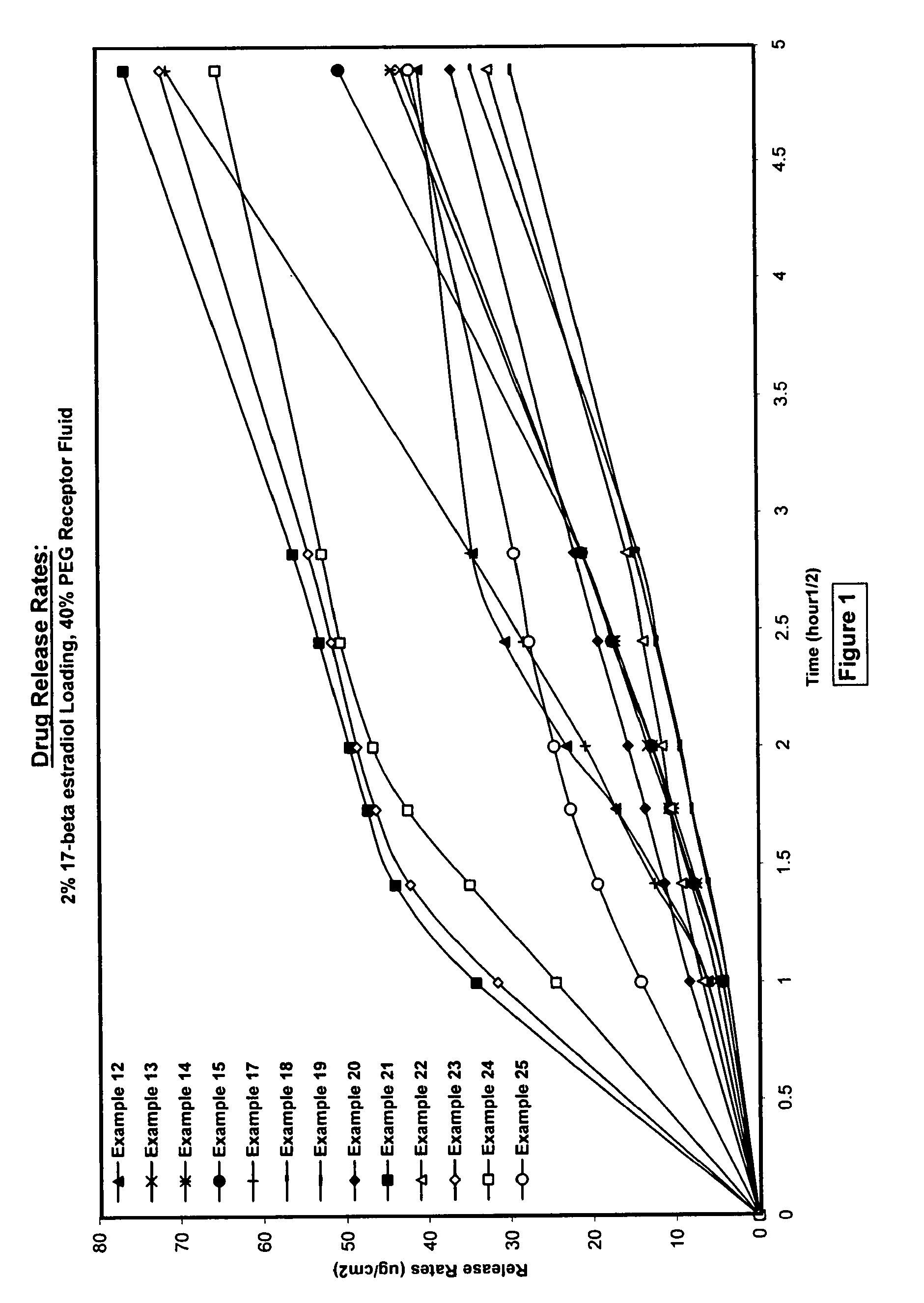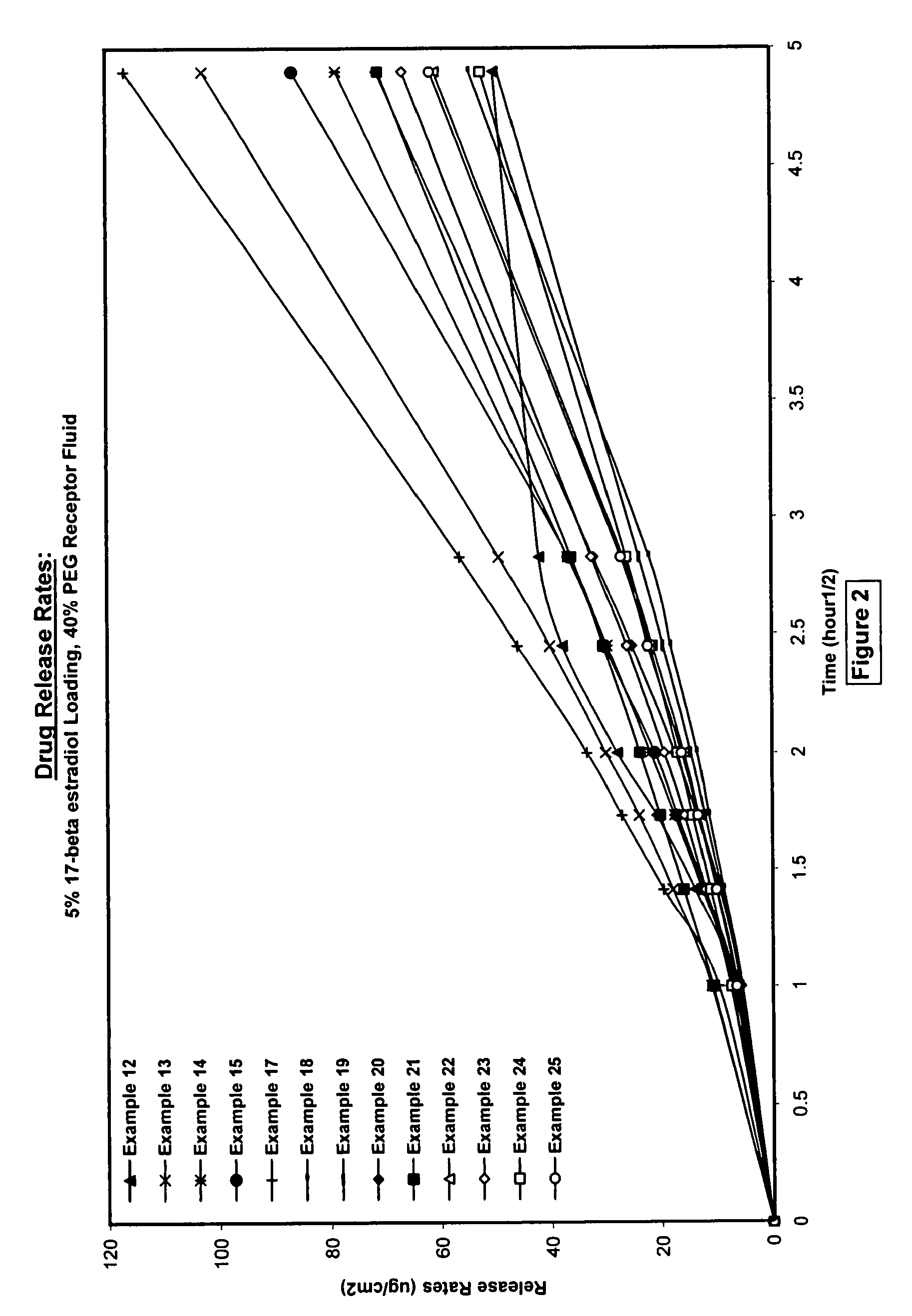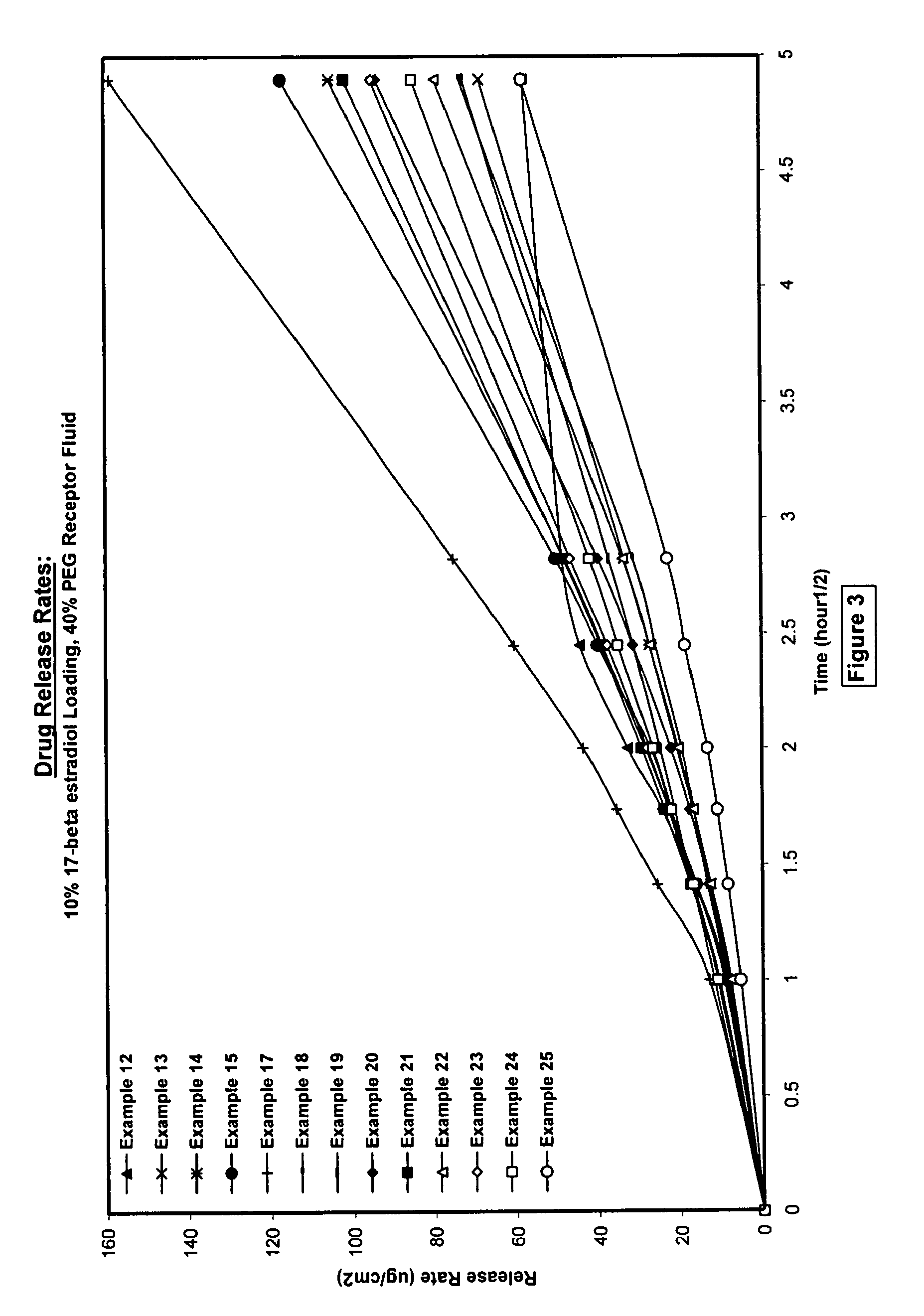Silicone acrylate hybride composition and method of making same
a technology of silicon acrylate and hybrid composition, which is applied in the direction of drug compositions, immunological disorders, metabolism disorders, etc., can solve the problems of poor low temperature performance, poor high temperature performance, and inability to adhere to surfaces with low surface energies, so as to achieve the effect of sufficiently controlling the ratio of silicon to acryli
- Summary
- Abstract
- Description
- Claims
- Application Information
AI Technical Summary
Benefits of technology
Problems solved by technology
Method used
Image
Examples
example 1
0.5% Acrylate Capping by Weight Solids of PSA
[0144]To a 32 ounce jar, 840.0 g of PSA 1 and 2.52 g of CA were added to form the silicon-containing PSA composition. Generation of HCl was immediate as indicated by pH paper color change. This material was allowed to mix overnight on a mixing wheel. The next day, approximately 150 g of sodium bicarbonate was added to the silicon-containing PSA composition to aid in the neutralization of the HCl. The sample was allowed to mix overnight. The silicon-containing PSA composition was then pressure filtered the next day to remove particulate.
example 2
0.75% Acrylate Capping by Weight Solids of PSA
[0145]To a 32 ounce jar, 840.0 g of PSA 1 and 3.78 g of CA were added to form the silicon-containing PSA composition. Generation of HCl was immediate as indicated by pH paper color change. This material was allowed to mix overnight on a mixing wheel. The next day, approximately 150 g of sodium bicarbonate was added to the silicon-containing PSA composition to aid in the neutralization of the HCl. The sample was allowed to mix overnight. The silicon-containing PSA composition was then pressure filtered the next day to remove particulate.
example 3
1.0% Acrylate Capping by Weight Solids of PSA
[0146]To a 32 ounce jar, 833.5 g of PSA 1 and 5.0 g of CA were added to form the silicon-containing PSA composition. Generation of HCl was immediate as indicated by pH paper color change. This material was allowed to mix overnight on a mixing wheel. The next day, approximately 126 g of sodium bicarbonate was added to the silicon-containing PSA composition to aid in the neutralization of the HCl. The sample was allowed to mix overnight. The silicon-containing PSA composition was then pressure filtered the next day to remove particulate.
PUM
| Property | Measurement | Unit |
|---|---|---|
| viscosity | aaaaa | aaaaa |
| temperature | aaaaa | aaaaa |
| Tg | aaaaa | aaaaa |
Abstract
Description
Claims
Application Information
 Login to View More
Login to View More - R&D Engineer
- R&D Manager
- IP Professional
- Industry Leading Data Capabilities
- Powerful AI technology
- Patent DNA Extraction
Browse by: Latest US Patents, China's latest patents, Technical Efficacy Thesaurus, Application Domain, Technology Topic, Popular Technical Reports.
© 2024 PatSnap. All rights reserved.Legal|Privacy policy|Modern Slavery Act Transparency Statement|Sitemap|About US| Contact US: help@patsnap.com










